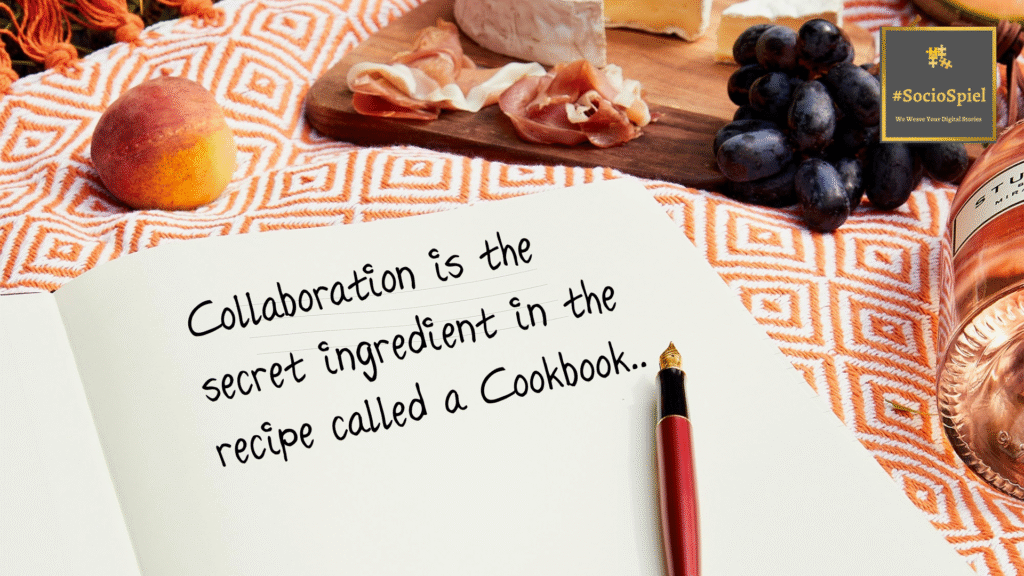
The Making of a Cookbook: A Story of Collaboration and Creativity
A Cookbook: Behind the scenes
The allure of the solitary author, the culinary genius toiling away to create a masterpiece, the mental picture is a beautiful myth. While one name proudly graces the cover, the reality is that a cookbook is one of the most intensely collaborative projects in the publishing world. It’s a symphony of skills that brings the pages to life, transforming simple ideas into a beautiful, functional guide for the reader, instilling a desire in them to try the recipes making them an experimenting cook. It is more like a recipe, where different elements come together to create a particular dish that celebrates the main ingredient!
Let’s get decoding
Having worked on a few cookbooks, and having interviewed a few cookbook authors, I can say that, if you’ve ever had the chance to work behind the scenes on a cookbook, you know this truth firsthand. Here is a look at the diverse, critical roles that prove a cookbook is truly a collective labour of love.
Let’s start peeling the onion, layer after layer!
1. The Architectural Team: Structure and Vision
Before the first dish is plated, a foundation must be laid. This is the architectural phase, which defines the book’s purpose and flow.
- Ideation and Structure: The core concept, the logical flow of chapters, and the thematic elements that connect the recipes are all part of this. From deciding what kind of introductory non-recipe content is necessary to organising the recipes into coherent sections, this structure ensures the book is not just a collection of instructions, but a complete, engaging experience.
- The Content Curator’s Role: Crucially, this stage involves curating the non-recipe components, the essays, historical notes, personal stories, and tips that give the book its voice and personality. It’s about building a world around food.
2. The Kitchen Team: Recipe Development and Rigour
The heart of any cookbook is the recipes, and ensuring they are clear, accurate, and delicious is a massive undertaking that requires multiple sets of eyes and hands.
- Research and Testing: New recipes aren’t just dreamt up; they are researched, developed, and rigourously tested in a kitchen. This involves countless hours of cooking, measuring, and re-cooking to ensure the results are reliable every single time.
- The Editorial & Standardisation Layer: This is the essential technical work that turns rough drafts into professional instructions. A dedicated editor must standardise every detail, from the format (e.g., using “1 cup” vs. “one cup”, or “tomato” in the ingredient list vs “tomates” in the method or even deciding whether to write ‘fresh green coriander’ for a colloquial appeal or stick to the universal “coriander leaves”) to verifying the ingredient list, proportions, and every single step. Missing a single ingredient or crucial step can turn a reader/experimenting cook’s attempt into a kitchen disaster.
- Contextualising the Food: Adding context, such as a short introductory description, historical origin, or a brief tip for each recipe, is vital for reader engagement. This research is often a separate, detailed task, transforming a simple list of ingredients into a culturally rich piece of content.
3. The Visual Team: Artistry and Appetite Appeal
A cookbook is one of the few types of books where the visual aesthetic is as important as the text. This is where the artistry of the food stylist and photographer comes into play.
- Food Styling: Making food look appetising under bright studio lights is an art. Food stylists work tirelessly to ensure every plate, garnish, and crumb is perfectly positioned to make the reader’s mouth water.
- Photography: The photographer’s job is to capture the light, texture, and mood of the food, transforming a dish into a stunning image that entices the reader to start cooking.
- Design and Presentation: Even before the publisher takes over, the initial groundwork on the book’s look, suggesting colour palettes, cover format, and general visual tone, is a critical collaborative step that guides the final design process.
The Collaborative Spirit
‘Tis time to take a bow
While the author deserves the final spotlight for their vision, culinary expertise, and guiding narrative, it’s important to remember that they are truly the conductor of an orchestra, not a soloist.
Everyone deserves their place under the sun
Every person involved, be it the recipe writers, the content editors, the researchers, the photographers, the stylists, and the book designers, contributes an indispensable layer of expertise. It is the cumulative excellence of this team that produces a polished, beautiful, and truly reliable book. A line of caution though: If you ever get involved in the BTS of cookbook writing, know that though you’d be totally involved in your part of the process, you’ll never have a final say. A lot would not turn out the way you had envisaged, as there could be factors like cost, urgency, efficiency of the other components at play.
And then are times when your efforts are highlighted – Yay!
In your heart, just revel in the satisfaction and joy of a job well done. The well-informed always know that the accolades belong not just to the name on the spine, but to the entire dedicated team that poured their passion into the pages. Again, there are experienced cookbook authors who know every bit of the process, the time and the effort, and never fail to acknowledge every person’s contribution to the massive success of the book. These are the very ones you should choose to work with.
